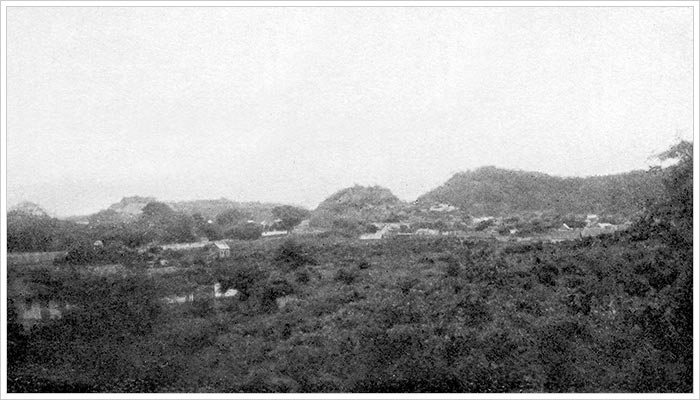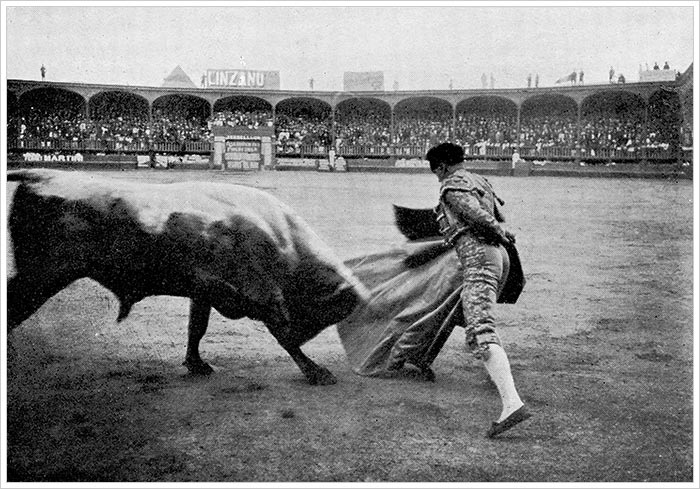Through the Nasca and Cañete Valleys, Part 1
On one of my frequent visits to Lima I made the acquaintance of a company promoter named Jackson. He had formed the idea that a large tract of country, lying between the great river Appurimac and the Nasca and Cañete valleys, was admirably adapted to grow sugar and various other crops. He wanted some one to explore the old viaduct that had been constructed by the Incas in days gone by, to conduct the waters of the Appurimac to this stretch of country; and to report on its condition before he approached the Government of Peru for a concession. Jackson wished to avoid laying out much money on preliminaries but, nevertheless, offered me £200 if I would take the job on, with a promise to supplement it with a 10 per cent. holding in the company he intended to form, in the event of matters turning out satisfactorily. I mentioned the subject to Bailey, the manager of the Cable Company, in the course of conversation, and he scouted the idea.
“Do you mean to say,” he exclaimed, “that you are going to risk riding through that vast desert, for a paltry £200, on spec?”
“Yes, and glad of the job,” I said. “It will only take me about a fortnight, and will afford me the chance of seeing one of the old bridges made by the Incas.”
“Man, you are mad!” he rejoined. “You’ll never get through. You will see nothing but heaps of human bones lying about; and mind you don’t add yours to them. In the first place, where will you find a horse that will carry your lump of a carcass?”
“Never mind about the horse part,” I said. “I think Golondrina and Tony will be equal to the task. Anyhow, I intend taking them and Francisco Caro with me.”
“Ah,” he agreed, “if you choose to take the best hurdler in Chile and the finest chaser, together with one of your best stable-lads, that alters the complexion of affairs. Still, I wish you well out of the job. You’ll find it is no picnic.”
This conversation didn’t daunt me in the least. I had calculated my chances very carefully, and felt convinced that the task was not beyond my powers. Accordingly the following July (i.e. July, 1900) saw my little party safely embarked on the Guatemala, en route for Cerro Azul. On arriving there we left the steamer and pushed on to Cañete, where we put up for a day at a house belonging to the British Sugar Co., in which corporation Leguia was interested financially.
Next morning we started on our adventurous ride. The first portion lay through a beautiful valley, luxuriant with grass and alfalfa, and dotted here and there with gorgeous tropical flowers. Only a few stunted trees were visible, but they were full of bloom. I was particularly attracted by some lovely pale blue and cream convolvulus creepers. (When I described them the other day to an acquaintance, a Mr. Reynolds, who had been formerly head gardener at one of England’s historic mansions, he classified them as weeds. I dare say he is right in a way, but to me their simple daintiness appeals more powerfully than many a choice specimen of the florist’s treasure house.) We made good progress, and reached the end of the valley before nightfall. There we came across an Indian homestead, the proprietor of which very civilly expressed his willingness to let me a small hut for myself, with a kitchen outside and an open thatched barn made of adobe bricks for the horses. His charge for two nights and a day was very moderate—only 2 sols in fact. He supplied us with a plenitude of provisions, such as paltas, chirimoyas, peaches, plantains, and other vegetables, and fowls’ eggs. Paltas grow wild in this valley, and indeed, in many other parts of Bolivia and Peru. West Indians call them Abogada* pears. At 2 cents apiece they were very cheap. The chirimoya I identified as the sugar apple of the West Indies. Those our landlord supplied us with were much finer, however, than any I had seen before. I paid for them no more than for the paltas. They were mostly larger than a cricket ball—some with rough skins, others perfectly smooth. I preferred the variety last described. The price was but 2 cents each! As for vegetables such as yams, sweet potatoes, etc., they cost me next to nothing.
Before we started on our first stretch of desert, I made very careful arrangements. I packed up a cooked fowl, some bread and a quantity of beef sandwiches, and placed them, together with a flask of whisky and a bottle of water, in the saddle-bags. These I slung on one side of Francisco’s mount. On the other side I fixed up two bottles of beer for the horses, and five pounds of oats, mixed with a little green alfalfa cut up fine. Then, after partaking of a substantial breakfast, we bade the Indian good-bye, and made for the narrow track that leads across the desert to the next valley, fifty-six miles away.
*Written “Avocada.”


